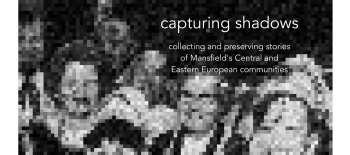March was far too cold and the only thing that could get me outside was the 16th Kinoteka Polish Film Festival. This year’s festival was, unsurprisingly, themed around the centenary of Poland’s independence. Alongside the regular festival strands, we were treated to the rare delights of Poland’s black-and-white interwar cinema. Here are my favourite moments.
New Polish Cinema
The older generation of Polish directors are always a treat to watch, but – as with any country’s cinema – I’m equally fascinated with new faces that might indicate new directions. Katarzyna Rosłaniec is one such face, whose self-styled ‘Sex, Drugs & Instagram’ drama Satan Said Dance breaks all the rules, just like its Berlin-based, drug-taking, sexually-liberated protagonist. The film juxtaposes a number of non-linear vignettes from its lead character’s decadent millennial party-hopping and purports to take aim at the sheer vacuousness of this sort of self-indulgent lifestyle. Unfortunately, many of the Poles I spoke to after the screening found the film itself rather self-indulgent. I’m actually pretty fond of the film. Satan Said Dance can feel like a hipster checklist at times, but for me it blends arthouse inclinations with a relatable irony in a way we simply don’t see in contemporary British cinema.
If Satan Said Dance is a colourful whirlwind of youthful vapidity, my other contemporary highlight is its polar opposite. The Reconciliation is a period piece, set on a former concentration camp in postwar Upper Silesia. It’s shaded with a muted palette and is essentially a reflection on the embodied brutality of war trauma. Polish or German, woman or man, friend or enemy – everyone suffers in this film. It’s a sobering experience, but one that sheds light on the unspoken necessity of betrayal in extreme circumstances. The score of The Reconciliation is so suitably eery, subtly drifting in to haunt each scene. It lingered in my mind for days after, much like the memory of war crimes committed across 20th century Europe…
The Joy of Zanussi
At the ripe old age of 78, Krzysztof Zanussi most certainly belongs to the older generation of Polish directors that I mentioned earlier. Not that you’d notice his age with the man’s energetic pace of creative output (40+ films, and that doesn’t include his shorts and documentaries). Zanussi was a guest at this year’s Kinoteka, where his debut film The Structure of Crystals (1969) screened. The film is brilliant and I highly recommend it. But at this point, I’m going to take a brief pause from talking about celluloid and instead recount a couple of Zanussi’s anecdotes from his Q&A.
We start off with the story of a fresh-faced Zanussi, out on the film festival circuit in Argentina to discuss The Structure of Crystals. He’s excited but nervous, he’s asked who his influences are. Zanussi wants to say Jean-Luc Godard, but the only French name that comes to his mind is Henri Cartier-Bresson. He knows this isn’t quite right, so blurts out Marcel Proust. Naturally, the interviewer wants to know more about the novelist’s connection to film, so Zanussi ends up making the accidental declaration that “Marcel Proust anticipated cinema.”
Our next story takes us back to when Zanussi was working on his debut film. He wanted to score the film before he shot it, which didn’t quite work out with his first composer. He then approached Wojciech Kilar, who told Zanussi that it was a stupid idea, but he’d do it anyway. This attempt flopped, Kilar was able to re-score it and thus began a long-lasting professional and personal relationship. Zanussi introduced Kilar to directors like Andrzej Wajda, Roman Polański and Francis Ford Coppola. With visible glee, he tells us how he confronted Kilar one day: “How dare you make such good music for other films?” The Kilar response? “Make a good film and I’ll write such good music for it.”
A Jewish Connection
Earlier this year, I took a trip to the POLIN Museum of the History of Polish Jews in Warsaw. The main exhibition is an incredible experience that starts off with the first Jewish settlers in the 10th century and traces Jewish history in Poland for the following thousand years or so. I was especially struck by the section on Jews in the interwar period – in the museum, there’s a reconstructed street displaying the thriving society of Polish Jews, alongside their theatre, literature and cinema that flourished during this period.
My new-found curiosity for Polish-Jewish culture was soon satisfied. A few weeks later, Kinoteka hosted a series of screenings celebrating Jewish cinema of the interwar period. The Jester (1937) was an absolute joy to watch. Set in the southern province of Galicia, it tells the story of the titular ‘jester’, a lonely wandering man who performs in the Purim play on the Jewish holiday. It’s a bittersweet love story, full of unrequited desires, tap-dancing vaudeville and a wise-cracking joker of a grandad. The film depicts a Jewish tradition of superb theatrical entertainment, which I was quite unaware of. It was also filmed in the distinctly Jewish town of Kazimierz Dolny, where shop fronts are decked out with Polish, Hebrew and Yiddish words. It’s wonderful to see such a lively Jewish community co-existing in the centre of Poland – in the post-Holocaust era, Kaziemierz Dolny’s Jewish population is no more.
In that respect, The Jester is also an emotional experience. It was released two years before the Nazi invasion of Poland and shows a bustling Jewish community that simply doesn’t exist in Poland now. The protagonists’ primary worries are love-related; within a few years, many of the film’s actors and crew were murdered in Nazi death camps. The Jester’s wonderfully entertaining Purim play centrepiece was appropriated by the Nazis in 1941 for their disgustingly anti-semitic propaganda The Eternal Jew. The film is both a reminder of interwar Poland’s open arms and the subsequent terror of the Holocaust. Most significantly, it preserves the memory of Jewish theatre and film, which – to our detriment – is often lost in modern Europe.
The Call of the Sea
As I described a couple of blog posts back, no Kinoteka is complete without a blistering closing gala musical collaboration. This time around, Submotion Orchestra’s Taz Modi put together a crew of talented musicians to play a live score to the 1927 silent film The Call of the Sea. The film is another glorious love story. It features sailor Stach, who – in spite of his rival’s villainous efforts – can’t disentangle himself from reuniting with his childhood sweetheart Hanka. A whole kilometre of the film was lost during the Second World War, but thanks to the restoration efforts of the Polish National Film Archive, two delightful hours of cinematic history are available to watch.
In many ways, The Call of the Sea is the 1920s equivalent of a modern-day blockbuster. It has A-list Polish silent film stars, the highest film budget of the era and thrilling cinematography (including aerial shots of the final chase sequence). This was the sort of film that screened to sold out cinemas and it’s lost none of its gripping excitement across the last 90 years. To watch the lead actors’ elegant theatrics is to understand interwar Poland’s classy European reputation; it sheds light on Warsaw’s former standing as ‘the Paris of the East’ and was a stylish end to a fantastic few weeks of film.




